Use the nursing process to take advantage of EHRs’ capabilities and optimize patient care.
Takeaways:
- If not used properly, the electronic health record (EHR) can create communication gaps.
- The nursing process can be applied to electronic documentation to avoid workarounds and close gaps in communication.
- Effective use the EHR can improve patient safety and care outcomes.
Clinical documentation supports patient care, improves clinical outcomes, and enhances interprofessional communication. When you document your assessments, plans, and actions, you rely on nursing practice standards, organizational policies, meaningful use directives, and a variety of quality criteria.
Proper documentation protects patients and your license
Standardizing handoff communication
Nursing informatics: The EHR and beyond
Electronic health records (EHRs) support that documentation with data that help you enhance patient safety, evaluate care quality, maximize efficiency, and measure staffing needs. And they serve as a standard form of documentation that can be shared by everyone on the healthcare team. However, when not used appropriately, EHRs can reduce nurses’ use of their critical-thinking skills, increase reliance on workarounds to bypass forms, and lead to errors and lost documentation. How can nurses take advantage of the benefits inherent in EHRs and eliminate some of the frustrations?
Confirming suspicions
With that question in mind, the Nurse Practice Council (NPC) explored the prevalence of docu- mentation gaps in our organization, St. Joseph’s University Medical Center (including St. Joseph’s Children’s Hospital), which has received American Nurses Credentialing Center’s (ANCC) Magnet® recognition four consecutive times. A close look at our quality department’s reports of near misses validated our suspicions on a range of issues, including human errors in recording heights and weights, missed vital sign trends, and generally poor handoff communication. The new workflow was affecting critical thinking and clinical judgment.
We took our concerns to the NPC where members described feelings of being torn between the priority of patient care and the chores of documentation. Nurses by nature are adaptive, so many resorted to workarounds, completing only mandatory elements, which led to less-than-ideal documentation. They told us that they were frustrated and dissatisfied with the EHR. Through collaboration with the NPC Informatics and Evidence Based Practice Committees, we explored how to improve nursing documentation by re-introducing the nursing process.
Identifying the problems
Over a period of 3 months, we retrospectively audited patient records from the medical-surgical area for baseline nursing documentation; data elements were analyzed for care decisions and patient safety. The initial work helped identify a number of design gaps, including fields that nurses weren’t required to complete but were essential for quality care. This deficiency was promptly fixed and was an easy win.
After all of the problems were identified, we chose nurse champions who were trained to continue chart audits and proper documentation, using the nursing process model on a larger scale. Training included workshops for proper EHR documentation techniques, record audits, case scenarios, and reflective feedback using Gibbs’ reflective cycle, a tool for helping people learn from situations. (For more information about Gibbs’ reflective cycle, see resources.eln.io/gibbs-reflective-cycle-model-1988/.) With our goal of integrating the nursing process with the EHR, we adopted the American Nurses Association’s definition of the nursing process as “an assertive, problem-solving approach to the identi- fication and treatment of patient problems.” (See Make the connection.) And to give the nurses a tool to help develop patient-centered care plans, we adopted the plan-do-study-act change model. (See On the map.)
Reviewing the outcomes
One year later, the project has expanded to many avenues of nursing, including RN orientation, preceptor classes, and individual unit education. Subsequent auditing (3, 6, and 9 months after education) shows improved documentation in areas with significant effect on patient care and safety, including these 3-month results:
- admission medication reconciliation—from 52% to 70%
- isolation indication—39% to 100%
- plan of care appropriate for patient’s chief com- plaint—83% to 100%
- plan of care related to patient comorbidities— 30% to 87%
- education level—4% to 17%
- safe patient handling—4% to 13%.
- discharge planning—4% to 17%.
As with every change project, leadership commitment is key. Our nursing leaders were supportive of the project and the proposed solutions. However, we encountered some challenges (and developed some solutions), including:
- Limited resources to spearhead change on a large scale—The NPC designed a tool to integrate the nursing process in our existing EHR.
- Inability to reach all users and cover all specialties—The nursing process tool was disseminated through each NPC representative to their respective specialties to be used as a guide in EHR documentation.
- Barriers to measuring the impact of change on patient outcomes and financial returns—Work has begun to develop a shorter and better way of auditing real-time documentation and evaluating nurses’ awareness and knowledge.
Staying in charge
This project empowered our NPC members to evaluate their documentation practices and reflect on what they learned from the audits, quality reports, and data mining. It enabled them to look to their future practices in clinical documentation and follow through with the nursing process. The EHR documentation review and tools have become part of the curriculum for the nursing preceptor workshops and our new hire orientation.
The authors work at St. Joseph’s University Medical Center in Paterson, New Jersey. Janet Pagulayan the nursing informatics coordinator. Salim Eltair is a nursing informatics systems manager. Kathy Faber is a clinical nurse leader and co-chair of EBP Nursing Practice Committee.
Selected references
Affordable Care Act (ACA). 2010. healthcare.gov/glossary/affordable- care-act Agency for Healthcare Research and Quality (AHRQ). Slide set: National quality strategy overview. 2017. ahrq.gov/workingforquality/nqs/overview.htm
American EMRs Association (ANA). Nursing: Scope and standards of practice. Silver Spring, MD: 2010; EMRsbooks.org nursingworld.org/~4af4f2/globalassets/docs/ana/ethics/principles-of-nursing-documentation.pdf
Beck SL, Weiss ME, Ryan-Wenger N, et al. Measuring nurses’ impact on health care quality: Progress, challenges, and future directions. Med Care. 2013;51(4 Suppl 2):S15-22.
Bowman S. Impact of electronic health record systems on information integrity: Quality and safety implications. Perspect Health Inf Manag. 2013;10:1c.
Conn J. Joint Commission puts focus on EHR, patient safety. Modern Healthcare. July 3, 2013. modernhealthcare.com/article/20130703/blog/307039936
Gibbs G. Learning by Doing: A Guide to Teaching and Learning Methods. Oxford: Further Education Unit; 1988.
Hendrich A, Chow MP, Skierczynski BA, Lu Z. A 36-hospital time and motion study: How do medical-surgical nurses spend their time? Perm J. 2008;12(3):25-34.
Joint Commission, The. Sentinel event alert 54: Safe use of health information technology. March 31, 2015. jointcommission.org/assets/1/6/SEA_54_HIT_4_26_16.pdf
Lavin MA, Harper E, Barr N. Health information technology, patient safety, and professional nursing care documentation in acute care settings. Online J Issues Nurs. 2015;20(2):6.
Mamykina L, Vawdrey DK, Stetson PD, Zheng K, Hripcsak G. Clinical documentation: Composition or synthesis? J Am Med Inform Assoc. 2012;19(6):1025-31.
Nykänen P, Kaipio J, Kuusisto A. Evaluation of the national nursing model and four nursing documentation systems in Finland—Lessons learned and directions for the future. Int J Med Inform. 2012;81(8):507-20.
Phillips W, Fleming D. Ethical concerns in the use of electronic medical records. Mo Med. 2009;106(5):328-33.
Nicol JS, Dosser I. Understanding reflective practice. Nurs Stand. 2016;30(36):34-42.
Sittig DF, Singh H. Toward more proactive approaches to safety in the electronic health record era. Jt Comm J Qual Patient Saf. 2017; 43(10):540-7.
Sockolow PS, Liao C, Chittams JL, Bowles KH. Evaluating the impact of electronic health records on nurse clinical process at two commu- nity health sites. NI. 2012:381.
U.S. Department of Health & Human Services. Health Information Technology for Economic and Clinical Health (HITECH) Act. 2009. hhs.gov/hipaa/for-professionals/special-topics/hitech-act-enforcement- interim-final-rule/index.html

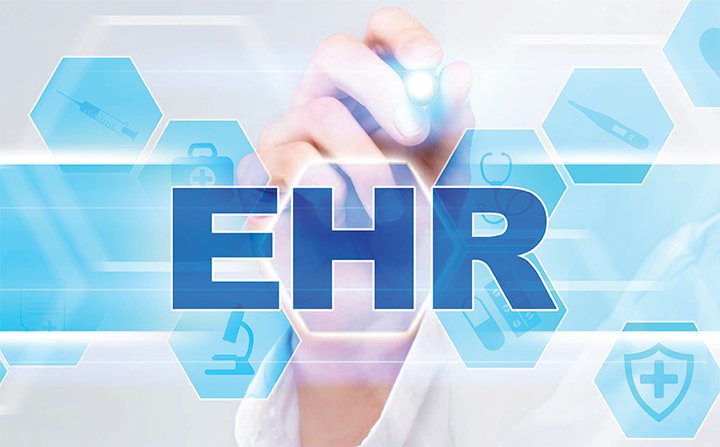
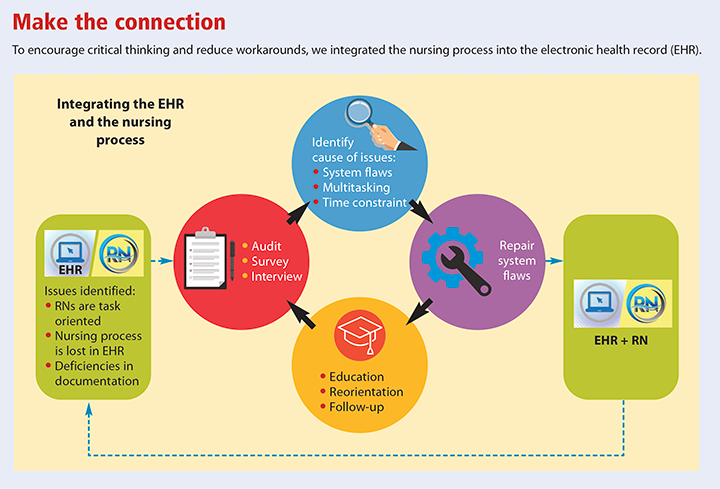
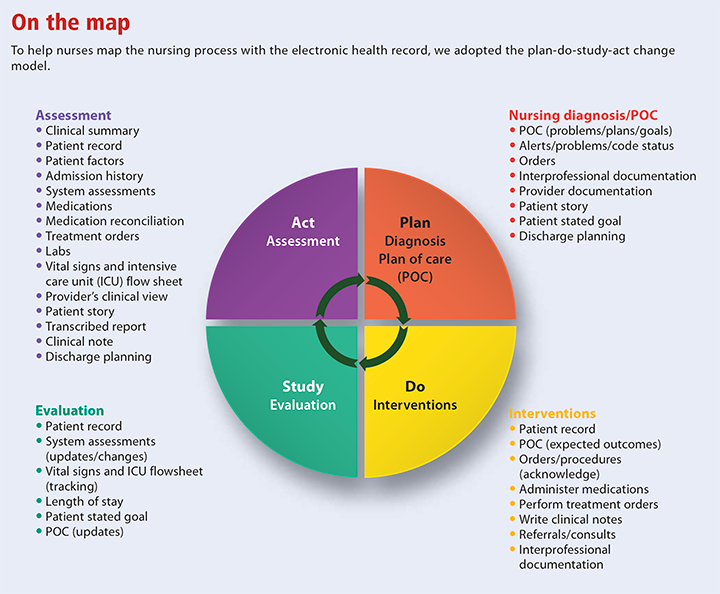










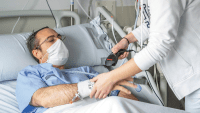



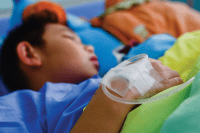


3 Comments.
A great way of improving the use of EHR is to give proper education and training to give efficiency and productivity to nurses who handle patients every day. Thanks for the well-researched article. Keep it up.
Great way to take charge of things and bring the change that was required. Congrats to everyone who was involved.
using EHR in documentation ,has it really improved the work of the nurses or otherwise.